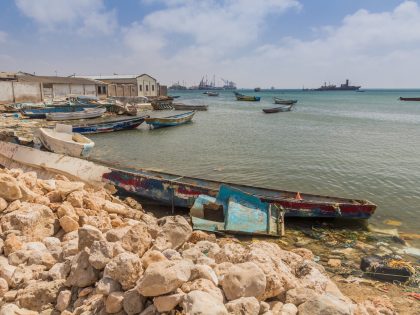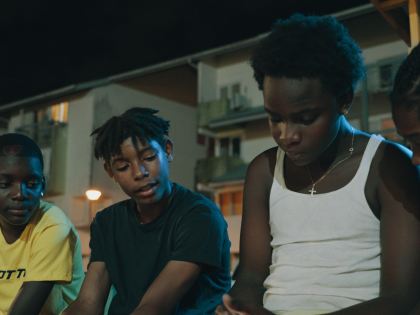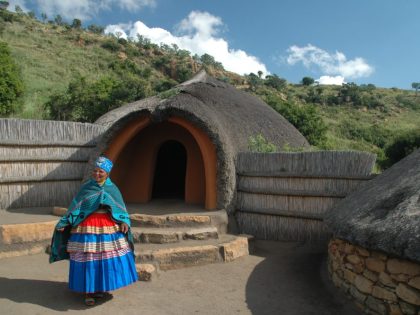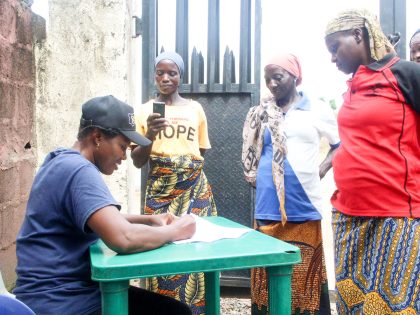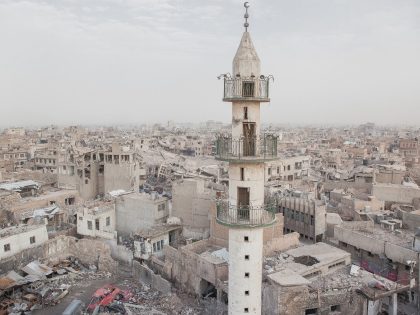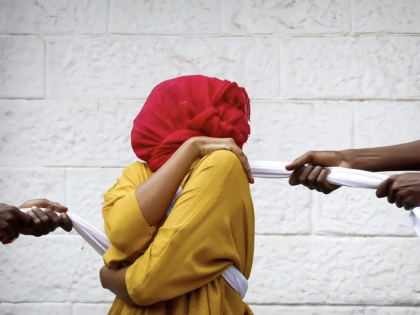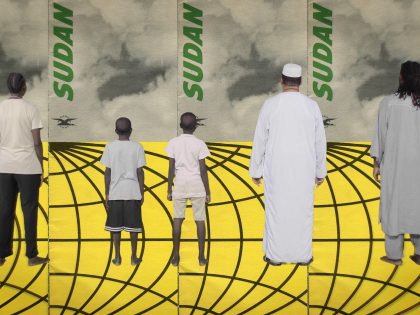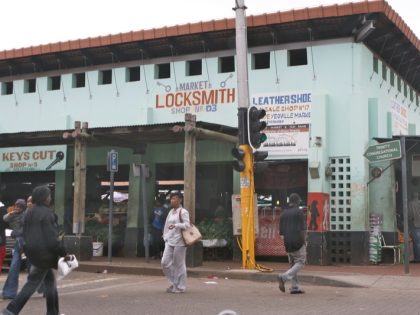What they don’t tell you about Stellenbosch
The brochures about the town left out the reality for Stellenbosch's black residents: poor, nasty, brutish, and short.

A view of the town from one of the university buildings (Wiki Commons).
Stellenbosch strikes me as one of those places that got put on the table by the National Party during the negotiated settlement pre-1994, something the ANC conceded in exchange for democracy. In fact, there’s a joke with more than a single grain of truth that the design of apartheid was conceived in one of the student residences of Stellenbosch University, where the young “architects” lived together. The divided socioeconomic structure of Stellenbosch is a living testimony to the long-term objective of apartheid.
In Stellenbosch, Coloured farm workers’ lives still matter little to the White landowners, as this community is in a wretched state of violence and drug abuse. Yet, driven by addiction and poverty they provide a constant supply of cheap labour. African people matter even less but have the benefit of relative sobriety and as a result can be trained faster and are easier to manage as labourers. The problem with Africans however is that they don’t all speak Afrikaans, and some don’t speak English either because they come from the Eastern Cape. This is considered a threat to Afrikaans hegemony in Stellenbosch because African communities in the area are growing rapidly as those arriving from the Eastern Cape, looking for work, also find a relatively functional public health service. Through democratic processes, the new threat of the Swart Gevaar is in being out-voted in your homebase. As for Indians, we may as well not exist. I know this because I spent 6 months leading an almost invisible life in that town.
As one enters the town off Baden Powell Drive on the N2 out of Cape Town, there’s an observable difference between White-owned and White-frequented establishments compared to those with Coloured and African customers. The reason I separate these two groups is because Coloureds don’t identify themselves as Black or as part of the Black majority and it’s evident in their interactions with African people. This is the legacy of apartheid and a failure of the new government to create a lasting unity. It’s similar to Indians in Durban who don’t identify themselves as Black either.
In Stellenbosch, as in the rest of the Western Cape, the ongoing perception of difference based on race or ethnicity reproduces separate development and segregation. Expensive restaurants and shops are located on the side of the town where the roads are lined with trees, and parks are filled with fit, young White university students, while tourists roam freely. And on the outskirts of the town, there are shops catering to the needs of workers. Every day thousands of African and Coloured people enter Stellenbosch in taxis, buses, trains and open top bakkies. They come in for work and then exit back to their homes at the end of the day. For those who have no place to go, there is a range of decent shelter in the centre of town which is safe, clean, well lit and has a number of solid buildings with dark corners. But for the most part, security guards won’t allow the unsightly presence of homeless people get in the way of the town’s cafe culture.
Tourists in Stellenbosch get to experience the world famous wine and complementary artisanal food that goes with it, while conveniently avoiding the dark reality of the labourers that toil to construct and maintain this picturesque fantasy. Again, I speak from personal experience because for 6 months I did just that. Except that I was confronted with the horrifying reality of the working class and the poor every day that I worked at Stellenbosch district hospital. It’s not that different from any other public hospital in South Africa: tuberculosis, cardiovascular disease and trauma, lots and lots of trauma.
On weekends and pay days, the incidence of violence and injuries peaks. Since Stellenbosch still bears the brunt of the legacy of the “dop” system, alcohol abuse amongst farm workers is endemic and every alternate weekend (which correlates with pay days) communities descend into a stupor of alcohol-induced self annihilation. Their self-destructive behaviour is likely a product of systematic dispossession, marginalisation and social isolation but is now driven by addiction. At a certain point in the collective stupor, they turn on each other and on nights like this, the emergency centre is a blood bath. Paramedics drive back and forth between locations picking up bleeding casualties and dropping them at the hospital to have their wounds sutured and cleaned.
This is the reality for Coloured and African communities of Stellenbosch; violence, alcoholism and drug abuse is part of life and being passed on from generation to generation with no end in sight. As for the farm and business owners, they don’t give a shit. As long as their separate lives are untouched by the brutality of the natives, they can enjoy the paradise of the Cape Winelands. Should something unforeseen spill over and disturb an owner’s manicured existence, workers are swiftly reminded that there is no place for anything other than servitude and respect for the boer and his business. For example, I’ll never forget the story from a sober young woman who was reprimanded by her employers after she was stabbed by her psychotic boyfriend in the reception area of a Franschhoek guesthouse where she worked.
In my previous job, I witnessed the inhumane living conditions that migrant farm workers on Limpopo farms bordering Zimbabwe experienced. And although they too were at the bottom of the food chain as a result of unfair labour practices and frank violations of human rights that persist in the agricultral sector, there was hope. There was a sense of motivation and a feeling that farm work was just a nasty yet necessary part of the journey on route to a better life. This doesn’t exist in the Cape Winelands as the poor and working class communities, trapped in a cycle of violence, are effectively at war with themselves, while the white farmers continue to reap the profits of their labour.
For me, the most horrifying part is the indifference towards it from the privileged White folk of Stellenbosch. How is it that in this university town, with an artist’s tribute to Nelson Mandela in the centre, there is no visibly active civil society speaking out against the unjust state of affairs, no one questioning the ongoing exploitation of farm workers or the lack of dedicated social programmes to alleviate the suffering and break the cycle of violence? What is the excuse now that apartheid is over and the “dop” system is illegal? Is it a case of “out of sight, out of mind”? Because it does go easily unnoticed when you spend your time between the university and wine tasting. The white people of Stellenbosch, clearly those with the means to affect change, don’t identify with the problem, don’t take any active responsibility towards it and hence are unable to condemn themselves for their part in it. Their attitude is likely an extreme version of what is generally true of the majority of white South Africans who could care less about what their privilege is built on. Perhaps if they “were to condemn themselves, they would have to inflict punishment on themselves”. And so the effect of the theft of self-determination that took place decades ago, continues unabated on its own momentum. But in the end it is highly unlikely that they will take the initiative in any sort of transformative project in Stellenbosch.
If boycotting Stellenbosch wine is a little too extreme, then try this: next time you’re admiring the legs of one the Cape Winelands’ finest exports, take a moment to reflect on the blood, sweat and tears, the violence, abuse and exploitation of women, men, families and communities that go into making that wine. As with the farm workers strike of January 2013, it’s obvious that this situation is ripe for revolution. Call me romantic, but soon the day will come when the anger and frustration of workers is no longer haphazardly hurled at each other, but organised and directed at their oppressors.
- This piece is published here with the kind permission of Amandla Magazine. The new issue is now available.









